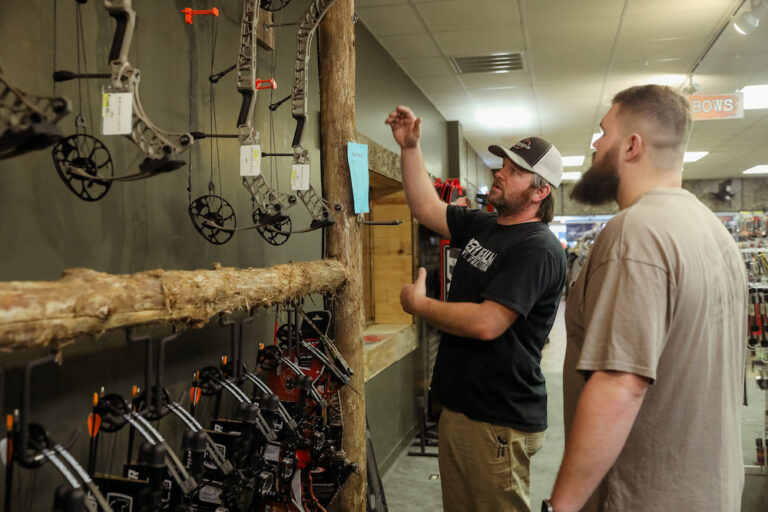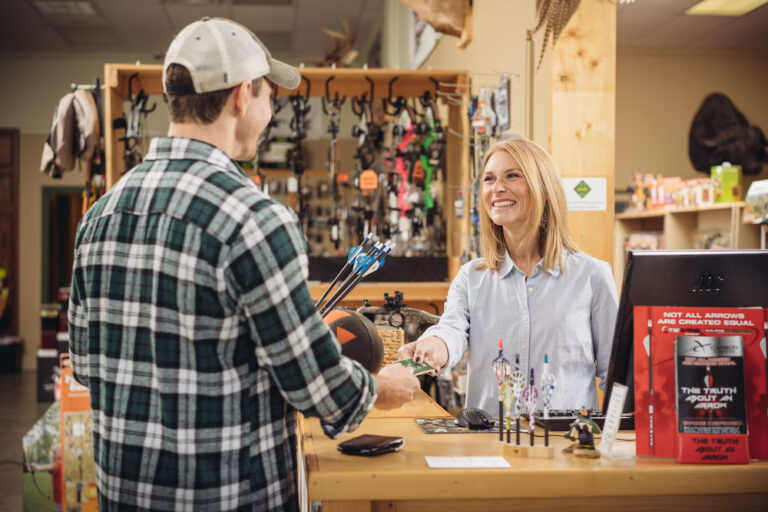BusinessRetail
Why Customers Expect Discounts and How to Deal
Follow these tips to better manage product prices and customer expectations regarding discounts.
Photo Credit: ATA
Deals. Discounts. Sales. Coupons. Customers love to save money; it’s logical and psychological. For a lot of people, paying full price is unheard of because many brands and big-box stores offer sales constantly. Some might need help affording the product. Either way, they search for coupons in their email inbox and on your website and social media platforms, and if they don’t find coupons or see in-store discounts, they’ll likely ask for them — because why not?
While discounts attract customers and boost your sales numbers, if you’re not careful, they can:
So how do you manage product prices and customer expectations? Use these tips to navigate business decisions and customer conversations regarding discounts.

Explain the features of the bow and what you get with a purchase. Photo Credit: ATA
People question the price when they don’t understand the value. In other words, they might question the cost of a bow because they don’t realize it includes a warranty, free setup, a top-notch quality product, and time spent with sales staff discussing bow options and features. After you finish your sales pitch or when someone asks why a bow or product is so expensive, convey the value, features and benefits of buying a specific product to help the customer understand or justify the cost. You can also talk about the value and product longevity in a featured product social post. Remember to be confident when you present your value proposition because customers feed off your energy.
Customers may inaccurately assume retailers get 100% of the product payment. You know that’s not true because the manufacturer gets a cut, and other portions go toward paying rent, utility bills, staff salaries, and for insurance and marketing efforts. But customers may not understand you receive just a small sliver as profit. Briefly communicate the distribution of funds to gently remind customers you’re not “jacking up the price” to make more money. There’s no need to share specific associated costs and product margins in a long-winded rant. Instead, simply mention how the money gets allocated during a casual conversation, only if a customer mentions the “absurd price.”

Place items on sale periodically, but not on a predictable pattern. Photo Credit: ATA
If you offer regular sales, you might accidentally condition customers into shopping only during sales. When customers get accustomed to buying discounted products, they become more reluctant to pay full price and, therefore, more willing to wait to purchase products when they go on sale. If customers can’t rely on sales because they’re sparse and random, they’ll be more willing to buy things at full price. Plus, they’ll buy additional items during sales because sales create a sense of urgency, encouraging customers to act quickly and make a purchase. Read this ATA article for an idea of when to put merchandise on sale.
New customers and bargain hunters typically look for coupons and only buy when they receive a discount. You don’t want to lose their business, and making limited exceptions shouldn’t hurt your business. Consider offering coupons to customers for their birthday or during select holidays. You can offer low overhead coupons for 10% off, buy-one-get-one range time or free tuning with a bow or class purchase.
Many archery retailers discount services over products because it doesn’t cut deeply into their profit margins. It’s a wise approach, but if you’re a certified archery instructor offering lessons and coaching sessions, it’s best to maintain your set price for those services. Consistent pricing tells customers you know your worth and aren’t willing to settle for less. Remind customers of their return on investment and how personalized archery instruction can help them dramatically improve their skills.
Not all customers who ask for discounts are cheap, greedy or unappreciative. Some people might ask because it’s their culture. Others might ask because they’re curious. Whatever the reason, try not to be offended and follow the guidance above to navigate these tricky, potentially awkward customer conversations without sacrificing profits.

WE ARE HERE TO HELP THE INDUSTRY, TO HELP INDIVIDUAL BUSINESSES GET THE MOST OUT OF THE INDUSTRY, AND TO HELP YOU.